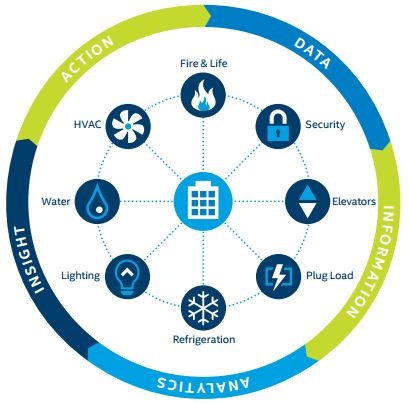through Project Haystack Collaboration

Christine Boles,
GM of Industrial and Energy Solutions Division for the Intel Internet of Things Group
Intel
|
April 2017 |
[an error occurred while processing this directive] |
| Advancing Smart Building
Industry Standards through Project Haystack Collaboration |
 Christine Boles, GM of Industrial and Energy Solutions Division for the Intel Internet of Things Group Intel |
| Articles |
| Interviews |
| Releases |
| New Products |
| Reviews |
| [an error occurred while processing this directive] |
| Editorial |
| Events |
| Sponsors |
| Site Search |
| Newsletters |
| [an error occurred while processing this directive] |
| Archives |
| Past Issues |
| Home |
| Editors |
| eDucation |
| [an error occurred while processing this directive] |
| Training |
| Links |
| Software |
| Subscribe |
| [an error occurred while processing this directive] |
In
the next year, smart building applications such as HVAC, lighting and
other environmental systems, are expected to lead the overall IoT
market as a result of increased connectivity and reduced device cost,
according to Gartner. Building managers looking to implement
smart and connected solutions across a number of structures, such as
offices, retail spaces, sporting arenas and high-scale luxury
apartments, are eager to gain real-time insights that can help them
increase energy efficiency, lower maintenance and improve the tenant
experience.
In fact, a
truly Smart Building implementation requires integration of several
systems together and delivers seamless experiences to its tenants and
facilities managers. Example, if a Smart Lighting, HVAC system and a
room finder application all need room occupancy information, each
vendor implements their own solution to create information from the
same data object or sensor.
However, one of the biggest challenges
facing those who wish to reap the data-rich rewards of smart buildings
is the sheer volume of data that is generated from multiple vendor and
service provider systems that fail to connect and communicate with each
other. The main reason for this is that many original equipment
manufacturers (OEMs) use a homegrown data language within their system
that is foreign to other equipment, causing a language barrier between
connected assets. What’s needed is a standardized method for describing
data, making it easier to analyze, visualize and derive value from our
operational data. Without integrated systems and a standardized way to
contextualize disparate system data sets, building operators may
struggle to create a clear picture of overall facility operations,
negating the much-touted efficiency and benefits of smart building
systems.
To advance
the effort in this space, Intel joined Project Haystack,
an open-source initiative created to streamline the integration of data
from the Internet of Things (IoT). Members of the initiative are
standardizing semantic data models and web services with the goal of
helping end users, and solution providers unlock value from the vast
quantity of data being generated by the smart devices found in our
homes, buildings, factories, and cities. This work currently targets
applications in automation, control, energy, HVAC, lighting and other
environmental systems. But this can expand to other vertical
applications such as Industrial and Retail.
By using semantic modeling, or data tagging,
Intel, and Project Haystack members are working to develop a method for
defining and describing smart device data, called Haystack Tags, which
will allow software applications to consume automatically, interpret,
analyze and present data from smart devices, smart equipment, and
systems for IoT.
An open standards-based solution for smart
building data tagging will help building owners and operators better
understand the data generated by various building systems in a
comprehensive way, eliminating one of the main barriers to IoT adoption
and streamlining future deployments for smart buildings. With
interoperable solutions, building owners can rest assure when selecting
a combination of smart building devices from multiple vendors that best
suits their property needs and avoid the fear of vendor lock-in caused
by incompatible proprietary protocols.

[an error occurred while processing this directive]Intel’s smart building offerings, such as its Building Management Platform (BMP) and robust
ecosystem of solutions, already enables an open-standards based
environment for building managers to deploy various technologies to
seamlessly connect to the cloud and process data input for actionable
insight. By collaborating with the Project Haystack Organization, Intel
is working to establish IoT data standards and messaging protocols that
allow vendors to provide integrated solutions. At the same time,
Project Haystack is helping remove data semantic barriers that are
inhibiting interoperability, to enable more innovative, scalable and
cost-effective solutions for smart buildings.
Interoperable solutions can help transform the
smart building industry to deliver more value across sustainability
needs, maintenance, tenant comfort, and more.
Learn more about Intel’s IoT solutions for smart
buildings here.
____________________________________
About the Author
Christine Boles is GM of Industrial and Energy Solutions Division for the Intel Internet of Things Group and is
responsible for leading global, cross-functional product development
teams from concept to product launch.
[an error occurred while processing this directive]
[Click Banner To Learn More]
[Home Page] [The Automator] [About] [Subscribe ] [Contact Us]